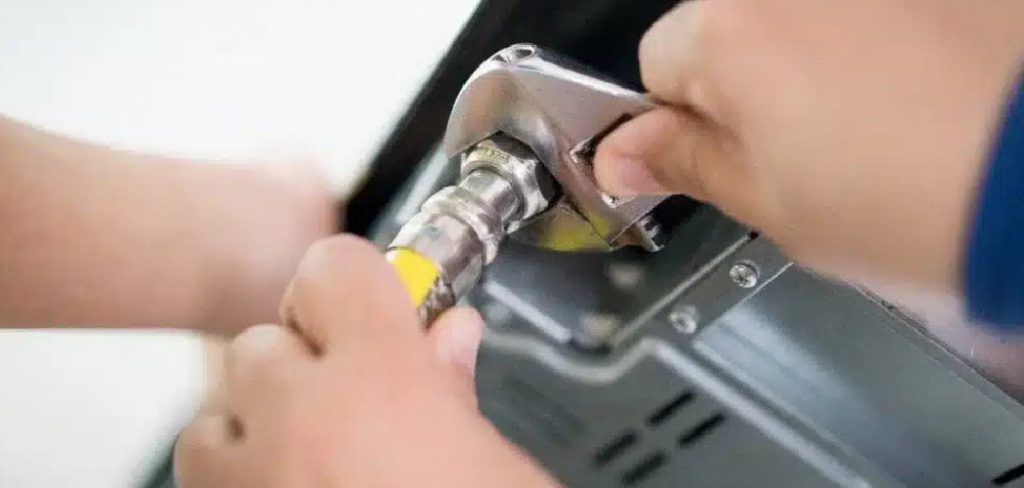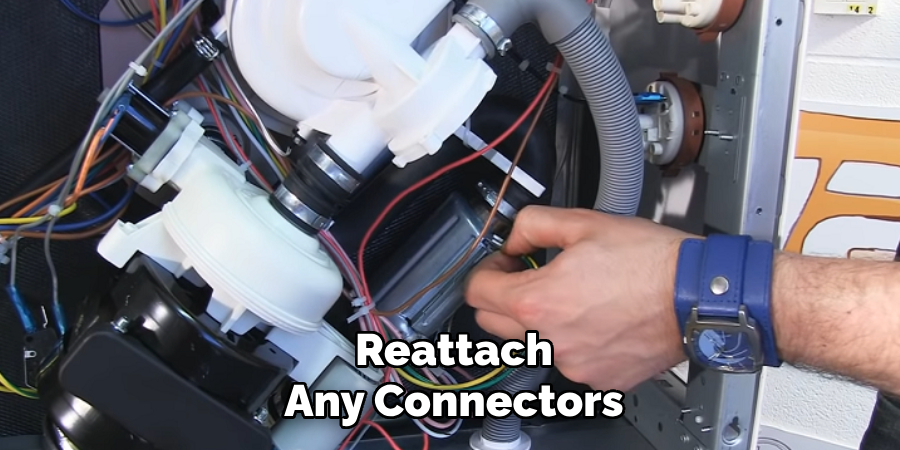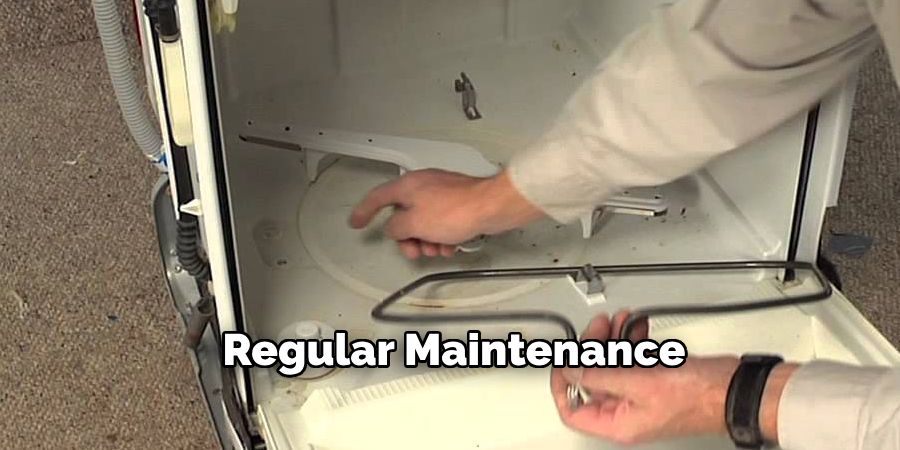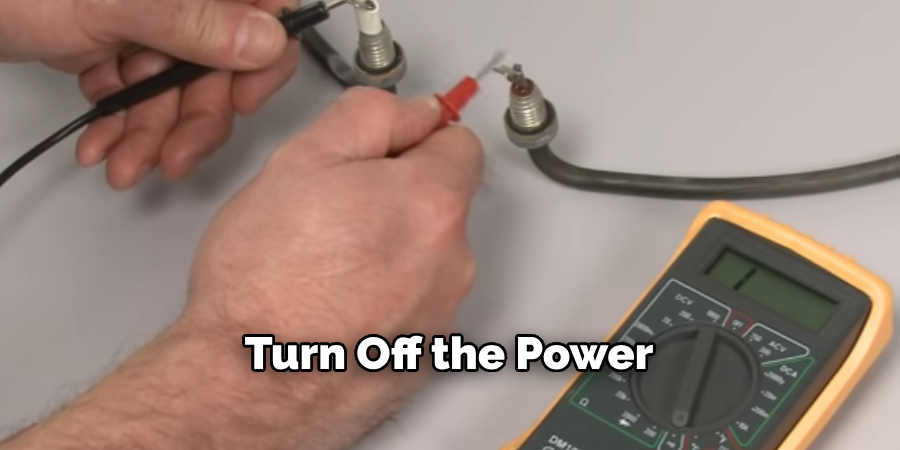The heating element in a dishwasher is essential for heating the water and drying the dishes effectively. Over time, this component may wear out or malfunction, leading to poor cleaning performance or no heat at all. Replacing the heating element may seem intimidating, but with the right tools and a step-by-step guide, it’s a manageable task for anyone with basic DIY skills.

This guide on how to change heating element in dishwasher will walk you through the process of safely and efficiently changing the heating element in your dishwasher.
Why Change the Heating Element?
Before we dive into the steps of changing the heating element, let’s first understand why it needs to be changed. As mentioned earlier, a faulty heating element can result in dishes not being cleaned properly and no heat for drying. This is because the dishwasher relies on hot water and heat to effectively clean and dry dishes.
In addition, a damaged or malfunctioning heating element can also cause other problems such as leaks or even electrical hazards. It’s important to regularly check and maintain your dishwasher’s heating element to ensure it is in good working condition.
Required Tools and Materials
Before you begin the process of changing the heating element, make sure you have all the necessary tools and materials. Here’s a list of what you’ll need:
Screwdriver
You’ll need a screwdriver to remove the screws holding the dishwasher’s access panel in place.
Multimeter
A multimeter is used to test the continuity of the heating element and determine if it needs to be replaced.
New Heating Element
Make sure you have a replacement heating element that is compatible with your dishwasher model.
Pliers or Wrench
These tools may be necessary for removing any clamps or connectors holding the heating element in place.
8 Steps on How to Change Heating Element in Dishwasher
Step 1: Turn Off the Power
Safety is the most important consideration when working with electrical appliances. Before starting, disconnect the dishwasher from its power source. This can usually be done by unplugging it from the wall outlet. If the dishwasher is hardwired, locate the circuit breaker panel and switch off the breaker that powers the dishwasher.

Once the power is off, double-check by attempting to turn on the dishwasher to ensure it does not receive electricity.
Step 2: Remove the Access Panel
Locate the access panel at the bottom front of the dishwasher. This panel is typically held in place by screws. Use your screwdriver to carefully remove all the screws securing the panel.
Once the screws are removed, gently pull the access panel away to expose the underside of the dishwasher. Set the panel and screws aside in a safe place for easy reassembly later. This step gives you access to the internal components, including the heating element.
Step 3: Disconnect the Heating Element
The heating element is usually located at the bottom of the dishwasher tub and is connected to wires and clamps. Use your pliers or wrench to carefully remove any connectors or clamps holding the heating element in place. Make sure to take note of how these components were connected for easy reassembly later.
Next, use your multimeter to test the continuity of the heating element. If there is no continuity, this indicates that the heating element needs to be replaced.
Step 4: Remove Old Heating Element
Once you have determined that the heating element needs to be replaced, gently pull it out from its position at the bottom of the dishwasher tub. Be careful not to damage any other internal components or wiring.
But, before disposing of the old heating element, make sure to take note of its placement and orientation. This will help when installing the new heating element.
Step 5: Install New Heating Element
Take your new heating element and carefully position it in the same spot where the old one was removed. Make sure it is oriented correctly according to your notes from the previous step.
Next, reattach any connectors or clamps that were removed earlier. Use your multimeter to test the continuity again to ensure proper installation.

Step 6: Reassemble Access Panel
Once the new heating element is securely installed, it’s time to reassemble the access panel. Carefully align the access panel in its original position at the bottom front of the dishwasher. Retrieve the screws you set aside earlier and use your screwdriver to fasten the panel back into place.
Ensure the panel is securely tightened, as a loose panel may cause vibration or noise during operation. Once this step is completed, the dishwasher’s underside will be fully enclosed and protected.
Step 7: Restore Power
With the new heating element installed and the access panel securely reassembled, it’s time to restore power to the dishwasher. If the dishwasher was unplugged, plug it back into the wall outlet. If it was hardwired, return to the circuit breaker panel and switch the breaker for the dishwasher back on.
Once the power is restored, turn on the dishwasher and run a short cycle to test the functionality of the new heating element. Check for proper heating and ensure there are no leaks or unusual noises. This confirms that the replacement was successful and that your dishwasher is back in working condition.
Step 8: Clean Up
Congrats, you have successfully changed the heating element in your dishwasher! All that’s left to do is clean up any tools and materials used during the process and enjoy sparkling clean dishes from your newly functional heating element.
Following these steps on how to change heating element in dishwasher and regularly maintaining your dishwasher’s heating element will ensure it continues to operate effectively and efficiently for years to come. Remember, safety should always be a top priority when working with electrical appliances, so if you are unsure about any step in the process, it is best to consult a professional technician. Happy dishwashing!
Additional Tips
- Regularly check for signs of wear or damage on your dishwasher’s heating element to catch any issues early on.
- If you are unsure about any steps in this guide, consult the dishwasher’s manual or a professional technician for guidance.
- It is recommended to change your heating element every 3-5 years, depending on usage and maintenance.
- Consider using a water softener if you have hard water in your area to prevent mineral buildup on the heating element.
- Clean your dishwasher regularly and remove any debris or food particles that may clog or damage the heating element. Keeping it clean will prolong the life of your dishwasher and its components. Keeping it clean will also result in cleaner and more efficient dishwashing.
- When purchasing a new heating element, make sure to check its compatibility with your dishwasher model for the best results.
- If you notice any strange noises or smells coming from your dishwasher after changing the heating element, turn off the power and consult a professional technician for assistance. It is always better to be safe than sorry when dealing with electrical appliances. Overall, regular maintenance and proper replacement of your dishwasher’s heating element will ensure smooth operation and prolong its lifespan. Happy dishwashing!

Frequently Asked Questions
Q1: Can I Change the Heating Element in My Dishwasher Myself?
A1: Yes, with the right tools and precautions, you can safely change the heating element in your dishwasher on your own. However, if you are unsure about any step in the process, it is best to consult a professional technician for assistance.
Q2: How Often Should I Change My Dishwasher’s Heating Element?
A2: It is recommended to change your dishwasher’s heating element every 3-5 years, depending on usage and maintenance.
Q3: Can I Use Any Heating Element for My Dishwasher?
A3: No, it is essential to check compatibility with your dishwasher model when purchasing a new heating element for optimal performance. Refer to the manufacturer’s manual or consult a professional technician for guidance.
Q: What Should I Do If My Dishwasher Still Isn’t Heating After Replacing the Heating Element?
A: If your dishwasher is still not heating after replacing the heating element, there may be an issue with the wiring or other internal components. It is best to consult a professional technician for further diagnosis and repair. Remember to always turn off the power before attempting any repairs.
Q: Can I Replace a Heating Element in Any Type of Dishwasher?
A: No, different dishwasher models may have different heating elements and installation processes. Always refer to your dishwasher’s manual or consult a professional technician for guidance specific to your appliance.
Q: Is It Dangerous to Work With Electrical Appliances Like Dishwashers?
A: Yes, it can be dangerous to work with electrical appliances if proper precautions are not taken. Always turn off the power and follow safety guidelines when attempting to repair or replace any components in your dishwasher. If you are unsure, consult a professional technician for assistance. Safety should always be the top priority. Do not attempt to work on a dishwasher if it is still connected toa power source.

Conclusion
In summary, knowing how to change the heating element in your dishwasher is a valuable skill that can save you time and money in the long run. By following these steps on how to change heating element in dishwasher and regularly maintaining your dishwasher’s heating element, you can ensure its optimal performance and prolong its lifespan.
Remember to always prioritize safety when working with electrical appliances and consult a professional technician if needed. Happy dishwashing!
Professional Focus
Angela Ervin, a former interior designer turned blogger, specializes in kitchen design and renovations. Through her website, she blends her passion for cooking with design expertise, sharing practical and creative ideas. Known for balancing functionality and beauty, Angela’s insightful content has made her a trusted voice in home design and lifestyle.
About the Author
Angela Ervin, an experienced interior designer and blogger, combines her passion for kitchen renovations with storytelling. Living in Petersburg with her family, she enjoys cooking and testing her projects firsthand. Known for her humor and relatable style, Angela shares creative, functional design insights through her content, making her a trusted voice in home design.
Education History
University: Virginia Commonwealth University
Degree: Bachelor of Fine Arts (BFA) in Interior Design
- Angela’s education at VCU focused on mastering core interior design principles, including spatial planning, color theory, materials selection, and sustainable design practices.
- She gained hands-on experience through studio projects and collaborative design exercises, which honed her ability to create functional and aesthetically pleasing environments.
- Her coursework also emphasized problem-solving and practical applications of design, preparing her for real-world projects like her self-directed kitchen renovations.
- The program’s strong foundation in both technical skills and creative expression shaped Angela’s ability to seamlessly integrate form and function in her work.
